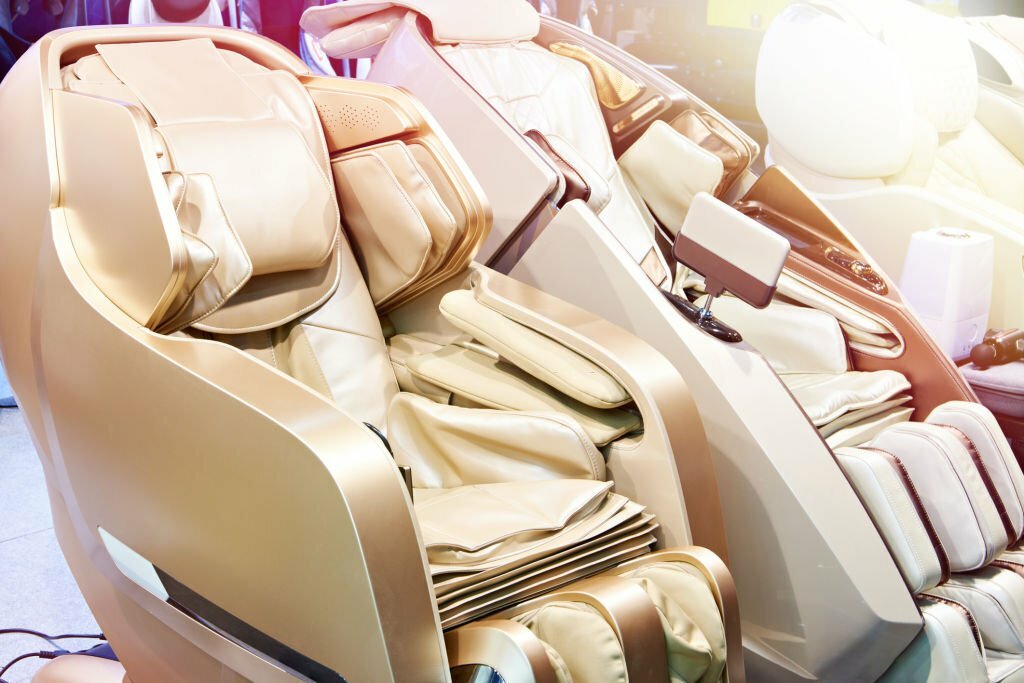The Environmental Footprint of Massage Chairs in Lahore, Pakistan: How Eco-Friendly Are They?
In our ever-changing world, an increasing number of consumers are adopting a green view, examining the environmental impact of the products they buy. From electric cars to sustainable fashion, eco-friendly choices are becoming the norm. Among the wide range of products on the market, the massage chair stands out as a luxury item with health benefits. But just how environmentally friendly are these relaxation stations? Let’s dive deep into the environmental footprint of massage chairs to uncover the truth.
Materials and Manufacturing
Materials Used: Most massage chairs are made using a mix of metals, plastics, and artificial leathers. While metals like steel can be recycled, plastics and artificial materials pose a greater environmental concern due to their long breakdown times.
Production Process: The making process involves using energy, especially when making electronic parts. Companies that use renewable energy sources or adopt energy-saving practices in their plants can reduce the environmental impact of each chair.
Energy Consumption
A massage chair, being an electronic device, naturally uses power. However, compared to many household appliances, their energy usage is quite low. Most modern massage chairs come fitted with features, such as automatic power-off, which turns off the chair after a period of no activity. This not only saves electricity but also extends the chair’s life.
Durability and LongevityOne of the most significant environmental impacts of any product is its longevity. A massage chair that lasts longer reduces the need for frequent replacements, decreasing waste. Top-quality massage chairs are built to last, ensuring many years of use and reducing the rate of discarded units.
Disposal and RecyclabilityWhen the time comes to retire a massage chair, its environmental footprint extends to disposing. While metal components are recycled, the plastic and man-made leather parts pose difficulties. A positive trend is the increasing number of companies offering return programs, ensuring that chairs are handled responsibly or even refurbished for extended use. |
 |
Eco-friendly Alternatives
With the increasing demand for environmentally friendly products, some manufacturers are leading the way in eco-friendly massage chairs. These models might use environmentally friendly materials like natural cotton, natural rubber, and safe dyes. Such options, though still in their early stages, suggest a more environmentally friendly future for massage chair production.
Top quality full body massage chair available online in Pakistan in the year 2024
Looking for the best massage chair in Lahore? Look no further! At SK Business Corporation, we offer the best massage chair in Pakistan, ensuring zero compromise on quality. With our 2023 models, experience the ultimate relaxation and full-body massage you deserve. Our chairs are designed for highlife comfort, equipped with features like zero gravity and heat therapy for an amazing massage experience. Explore our wide range now and prioritise your healthy lifestyle with SK Business Corporation!
Conclusion
While massage chairs might not be the best examples of eco-friendly products, they're not the worst either. Their energy-saving nature, along with increasing attempts to use eco-friendly materials and careful disposal methods, presents a hopeful outlook. As buyers, we have an important role to play. By choosing brands dedicated to environmental friendliness and ensuring our chairs last long and serve well, we can reduce their impact on the environment. After all, relaxation and an understanding of environmental issues can complement each other.
